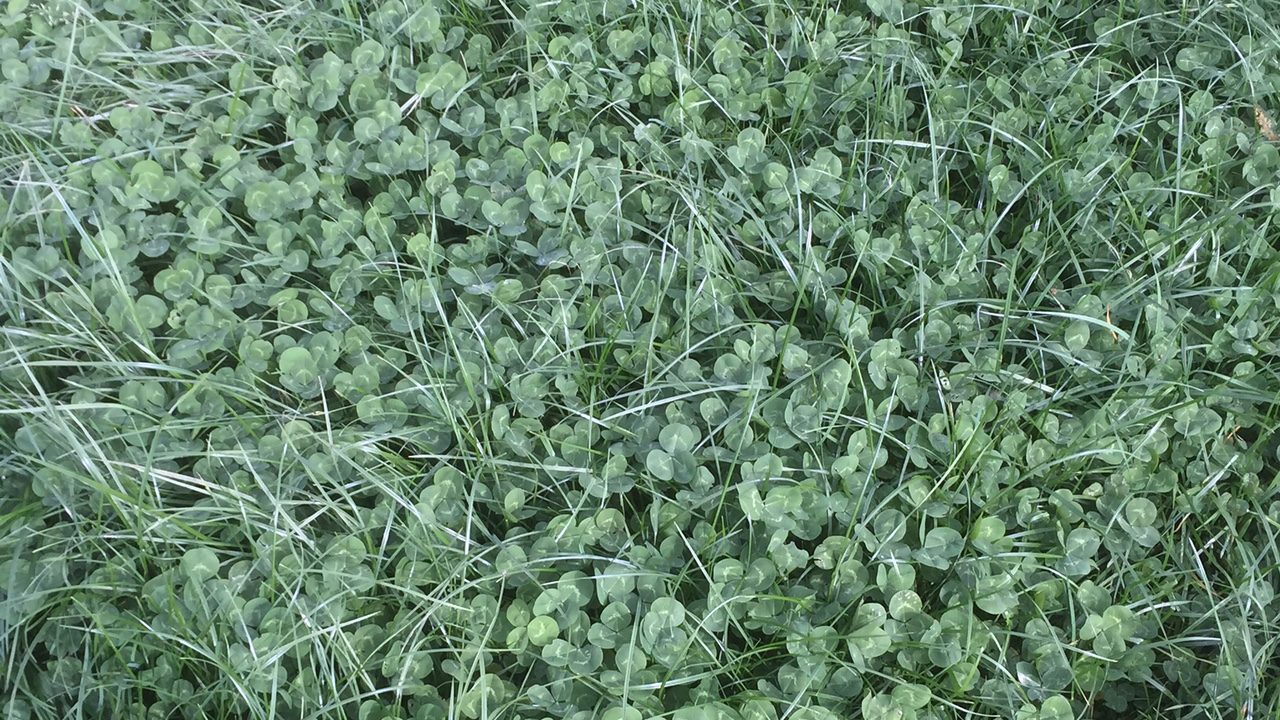The benefits of sowing white clover was one of the key topics discussed at a recent farm walk near Maguiresbridge in Co. Fermanagh.
The walk was hosted by the College of Agriculture, Food and Rural Enterprise (CAFRE) and took place on the farm of Stephen Maguire.
At the event, CAFRE advisors offered farmers tips on sowing and growing white clover, and on incorporating it into a beef-grazing system.
The advice for sowing white clover
White clover can be sown between late-April and mid-July and can be sown during a conventional reseeding or alternatively, it can be oversown on an existing sward.
Ideally, white clover should be targeted at high-fertility fields with a soil pH above 6.3, and in fields where weeds are under control. Clover also tends to perform better on drier fields.
White clover is considered to be more suitable for grazing ground while red clover is considered more suitable for silage ground.
Where farmers have a sheep enterprise, small to medium-leaf clover should be selected for sowing as the sheep grazing pattern can remove large-leaf clovers.
When the grazing stock is solely cattle, medium and large-leaf clover varieties should be selected.
When oversowing white clover, fields with a high-perennial grass content should be selected and farmers should avoid oversowing on older, ‘butty’ swards.
The time to sow clover seed when oversowing is after the paddock has been tightly grazed or cut for silage.
While grass will start to grow at soil temperatures of 5-6°, clover needs soil temperatures of 10° to grow – hence why established clover is seen in paddocks later in the year than grass.
After sowing
After sowing, it is advisable to roll the field to improve seed-soil contact. However, the clover seed should not be buried any deeper than 10-12mm.
The recommended sowing rate for white clover is 2kg/ac when oversowing.
As the clover seed is so small, the stitching-in option will be more accurate than broadcasting seed through a fertiliser spreader.

After sowing clover seed, phosphorus (P) and potassuim (K) can be applied, but nitrogen (N) should not be used as the clover needs time to establish first.
After sowing the clover, the paddock should be grazed before grass covers surpass 2,700-2,900kg/dry matter (DM)/ha, to ensure light can get down to the young clover plants, and the paddock should be grazed regularly until the clover is established.
At the farm walk, farmers were told that a grass/clover sward fertilised with 50kg/N/ha can sustain similar output to a grass-only sward fertilised with 200kg/N/ha.
